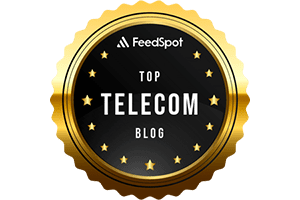Distributed-RAN (D-RAN)
Dell’Oro: AI RAN to account for 1/3 of RAN market by 2029; AI RAN Alliance membership increases but few telcos have joined
AI RAN [1.] is projected to account for approximately a third of the RAN market by 2029, according to a recent AI RAN Advanced Research Report published by the Dell’Oro Group. In the near term, the focus within the AI RAN segment will center on Distributed-RAN (D-RAN), single-purpose deployments, and 5G.
“Near-term priorities are more about efficiency gains than new revenue streams,” said Stefan Pongratz, Vice President at Dell’Oro Group. “There is strong consensus that AI RAN can improve the user experience, enhance performance, reduce power consumption, and play a critical role in the broader automation journey. Unsurprisingly, however, there is greater skepticism about AI’s ability to reverse the flat revenue trajectory that has defined operators throughout the 4G and 5G cycles,” continued Pongratz.
Note 1. AI RAN integrates AI and machine learning (ML) across various aspects of the RAN domain. The AI RAN scope in this report is aligned with the greater industry vision. While the broader AI RAN vision includes services and infrastructure, the projections in this report focus on the RAN equipment market.
Additional highlights from the July 2025 AI RAN Advanced Research Report:
- The base case is built on the assumption that AI RAN is not a growth vehicle. But it is a crucial technology/tool for operators to adopt. Over time, operators will incorporate more virtualization, intelligence, automation, and O-RAN into their RAN roadmaps.
- This initial AI RAN report forecasts the AI RAN market based on location, tenancy, technology, and region.
- The existing RAN radio and baseband suppliers are well-positioned in the initial AI-RAN phase, driven primarily by AI-for-RAN upgrades leveraging the existing hardware. Per Dell’Oro Group’s regular RAN coverage, the top 5 RAN suppliers contributed around 95 percent of the 2024 RAN revenue.
- AI RAN is projected to account for around a third of total RAN revenue by 2029.
In the first quarter of 2025, Dell’Oro said the top five RAN suppliers based on revenues outside of China are Ericsson, Nokia, Huawei, Samsung and ZTE. In terms of worldwide revenue, the ranking changes to Huawei, Ericsson, Nokia, ZTE and Samsung.
About the Report: Dell’Oro Group’s AI RAN Advanced Research Report includes a 5-year forecast for AI RAN by location, tenancy, technology, and region. Contact: [email protected]
………………………………………………………………………………………………………………………………………………………………………………………………………………………………………………
Author’s Note: Nvidia’s Aerial Research portfolio already contains a host of AI-powered tools designed to augment wireless network simulations. It is also collaborating with T-Mobile and Cisco to develop AI RAN solutions to support future 6G applications. The GPU king is also working with some of those top five RAN suppliers, Nokia and Ericsson, on an AI-RAN Innovation Center. Unveiled last October, the project aims to bring together cloud-based RAN and AI development and push beyond applications that focus solely on improving efficiencies.
……………………………………………………………………………………………………………………………………………………………………………………………………………………………………………….
The one year old AI RAN Alliance has now increased its membership to over 100, up from around 84 in May. However, there are not many telco members with only Vodafone joining since May. The other telco members are: Turkcell ,Boost Mobile, Globe, Indosat Ooredoo Hutchison (Indonesia), Korea Telecom, LG UPlus, SK Telecom, T-Mobile US and Softbank. This limited telco presence could reflect the ongoing skepticism about the goals of AI-RAN, including hopes for new revenue opportunities through network slicing, as well as hosting and monetizing enterprise AI workloads at the edge.
Francisco Martín Pignatelli, head of open RAN at Vodafone, hardly sounded enthusiastic in his statement in the AI-RAN Alliance press release. “Vodafone is committed to using AI to optimize and enhance the performance of our radio access networks. Running AI and RAN workloads on shared infrastructure boosts efficiency, while integrating AI and generative applications over RAN enables new real-time capabilities at the network edge,” he added.
Perhaps, the most popular AI RAN scenario is “AI on RAN,” which enables AI services on the RAN at the network edge in a bid to support and benefit from new services, such as AI inferencing.
“We are thrilled by the extraordinary growth of the AI-RAN Alliance,” said Alex Jinsung Choi, Chair of the AI-RAN Alliance and Principal Fellow at SoftBank Corp.’s Research Institute of Advanced Technology. “This milestone underscores the global momentum behind advancing AI for RAN, AI and RAN, and AI on RAN. Our members are pioneering how artificial intelligence can be deeply embedded into radio access networks — from foundational research to real-world deployment — to create intelligent, adaptive, and efficient wireless systems.”
Choi recently suggested that now is the time to “revisit all our value propositions and then think about what should be changed or what should be built” to be able to address issues including market saturation and the “decoupling” between revenue growth and rising TCO. He also cited self-driving vehicles and mobile robots, where low latency is critical, as specific use cases where AI-RAN will be useful for running enterprise workloads.
About the AI-RAN Alliance:
The AI-RAN Alliance is a global consortium accelerating the integration of artificial intelligence into Radio Access Networks. Established in 2024, the Alliance unites leading companies, researchers, and technologists to advance open, practical approaches for building AI-native wireless networks. The Alliance focuses on enabling experimentation, sharing knowledge, and real-world performance to support the next generation of mobile infrastructure. For more information, visit: https://ai-ran.org
References:
https://www.delloro.com/advanced-research-report/ai-ran/
https://www.delloro.com/news/ai-ran-to-top-10-billion-by-2029/
Dell’Oro: RAN revenue growth in 1Q2025; AI RAN is a conundrum
AI RAN Alliance selects Alex Choi as Chairman
Nvidia AI-RAN survey results; AI inferencing as a reinvention of edge computing?
Deutsche Telekom and Google Cloud partner on “RAN Guardian” AI agent
The case for and against AI-RAN technology using Nvidia or AMD GPUs



